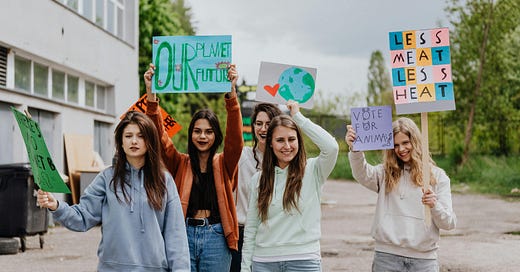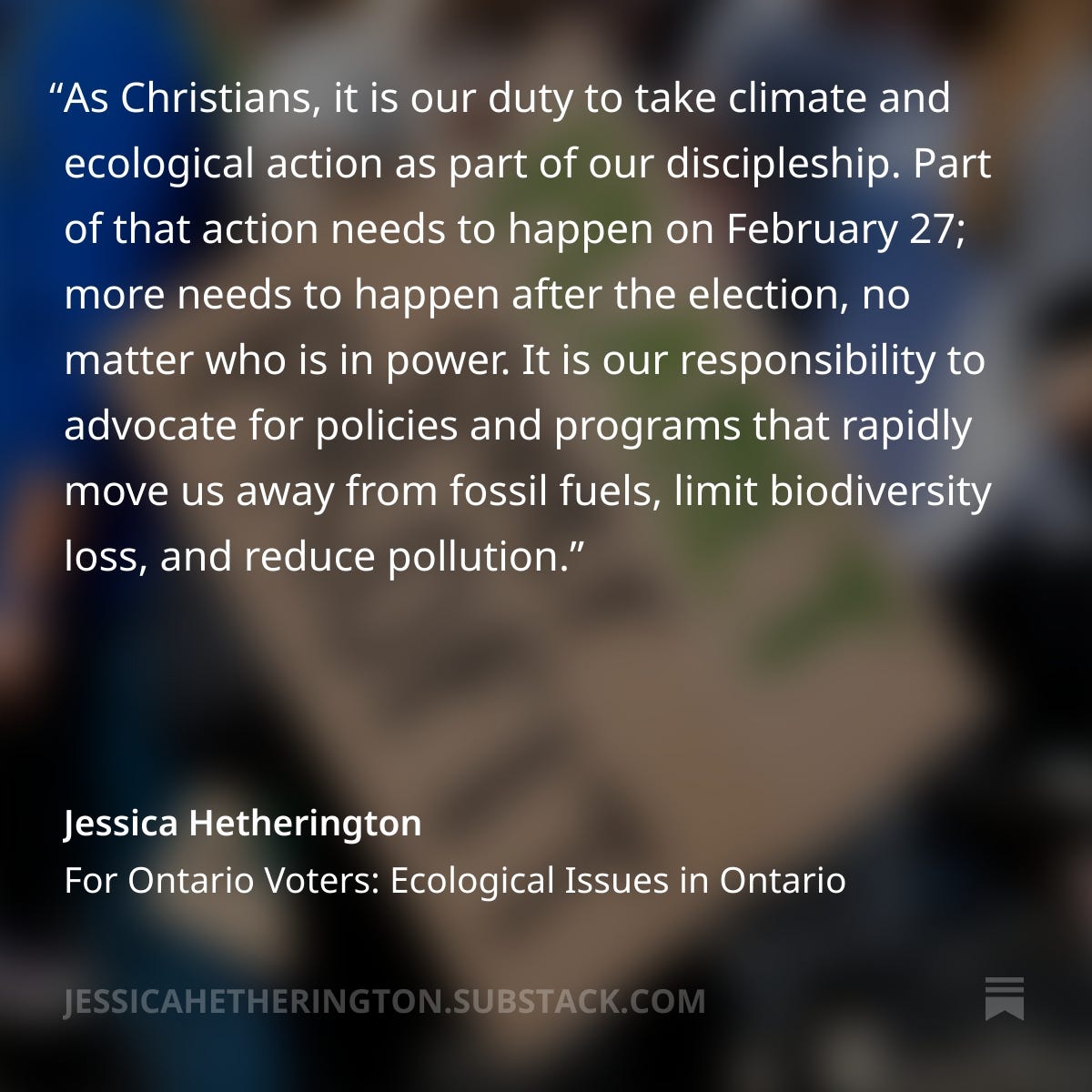A Collective Discipleship of Climate Action: The Potential of Climate Litigation
The World Council of Churches is inviting member churches to consider climate litigation as part of their climate justice action. We imagine what that might look like
Hello friends. On the heels of a distressing, albeit unsurprising election result in Ontario, let us remember something that I wrote earlier this week in a special issue on ecological issues in Ontario:
So today and tomorrow and the day after that, we are each called to work for the world that we want to see for ourselves, for others, and for the entire Earth community.
We are in a climate and ecological crisis, and it’s all hands on deck... Subscribe to join a community of people of faith who care about climate action and find hope and encouragement at the same time!
To encourage you, here is an article posted today by Toronto resident and author of several books on living and building a low-carbon world,
:Beginning Next Week: A Lenten Reflection Series
Singing Resurrection When the Earth is Being Crucified: A Lenten Reflection
Friends, like I did for Advent, I’m preparing a series of weekly reflections as we move into the season of Lent and prepare for Easter. The name of this series, “Singing Resurrection When the Earth is Being Crucified,” is based on a haunting question by Anglican priest Stephen Blackmer: “What does resurrection look like when it is the Earth that is being crucified?”1
Of course, Lent is not yet Easter; we must enter a necessary time of reflection and repentance, and so this year I invite you to enter that time with respect to the reality of the climate and ecological crisis. Each Friday I will offer a brief scriptural reflection, questions for you to consider, and a short prayer. I pray that these are meaningful for you and deepen your Lenten journey this year.
This reflection will be available to paid subscribers of Faith. Climate Crisis. Action. If you haven’t upgraded yet, you can do so here!
A Collective Discipleship of Climate Action: The Potential of Climate Litigation
A couple of weeks ago I introduced the topic of climate litigation, a way of using the courts to force governments and big business to take climate action. I defined climate litigation as “a way of holding governments, financing institutions, and industries accountable for their roles in the climate crisis.”
Did you miss that newsletter? Here it is:
Over the last few decades, climate litigation has emerged as a powerful tool for individuals and civil society organizations to pursue climate justice. Since the 1980s, there have been 2600 climate cases filed around the world; approximately 70% of those were initiated after the Paris Agreement in 2015. In 2023, more than 70% of the cases filed that year were filed by individuals, civil society organizations, or both.2
Climate litigation is predicated upon the importance of climate justice, which is a model of climate action that centers on human rights and the need to protect the most vulnerable in society, those who are least responsible for causing the climate crisis yet disproportionately burdened by its consequences.
As we know, the climate crisis does not impact everyone evenly; those who are most impacted especially in the global South, have contributed the least to the causes of the crisis, but are the first and hardest hit by its consequences. Children, in every human community, are particularly vulnerable, now and in the future. Thus, the principle of intergenerational equity is key to climate justice.
“Intergenerational equity concerns the responsibility of the present generation to manage natural resources and the environment in a way that does not compromise the ability of future generations to meet their needs.”3
Two statistics offered at the training in Panama illustrate the vulnerability of children in stark ways:
· 88% of disease related to climate change harm children under the age of 5
· More than 99% of children – in other words, almost every single child, no matter where in the world – are now exposed to at least one climate/ecological hazard.4
Those statistics are just for today, when global heating has risen to 1.1°C since 1850, and is due to reach 1.5°C in less than five years. Think about how much worse it will be as the temperature keeps rising.
These are devastating numbers that reflect the reality of how children are being impacted by the climate crisis. Within the church, we often feel limited in what we can do to take climate action, individually as people of faith, and especially as congregations. Communities of faith often focus on how they can increase their energy efficiency by ‘greening’ their church buildings. Sometimes clergy (like me) are invited to speak on issues of climate change and our responsibility as Christians. At higher levels of the church, denominations create position papers and write advocacy statements in support of climate action. We are not alone in feeling like these efforts are too little, and ultimately insufficient when confronting the magnitude of climate change.
However, climate litigation has the potential to provide churches with real hope in making systemic change in the fight against those who are responsible for (and profit from) the climate emergency.
Need to find encouragement and hope in this time of climate and ecological crisis? Want to support this eco-ministry that is international and ecumenical and have access to the full breadth of my work? With a paid subscription you’ll get more of the encouragement you need, find hope in this difficult time, and make this ministry possible!
Are you in paid ministry? I offer ideas and inspiration for your preaching, teaching, and pastoral care. You can claim the subscription as a continuing education expense.
Keep reading with a 7-day free trial
Subscribe to Faith. Climate Crisis. Action. to keep reading this post and get 7 days of free access to the full post archives.














